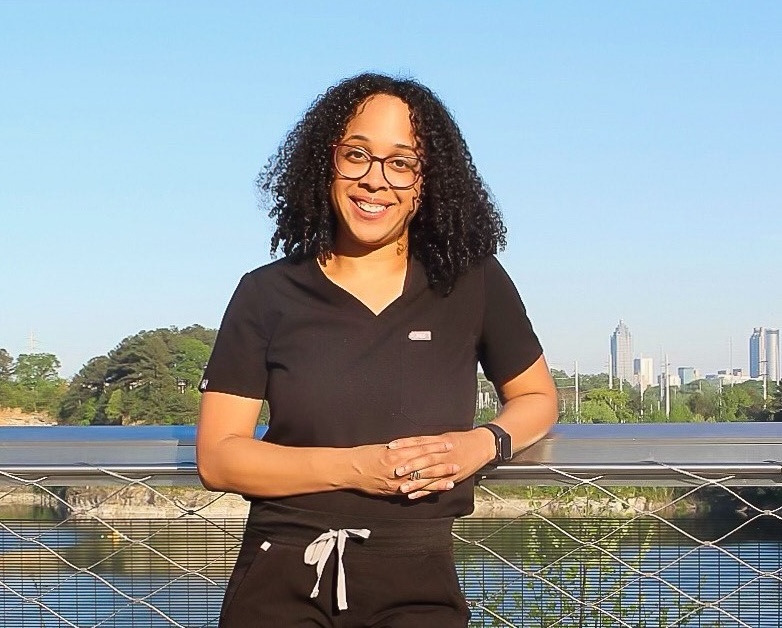If you or a loved one has received a cancer diagnosis, it’s normal to feel overwhelmed and confused. You may be thinking about what comes next and available treatment options.
When it comes to a cancer treatment plan, there’s a lot to consider. Cancer treatments can be different in the way they are delivered, the types of cancer they treat and the side effects that come with them. Plus, some treatments are only used for cancer at specific stages.
So make sure to get the support you need as you plan for what’s next. An oncologist can help you determine a cancer treatment plan that makes the most sense based on the type and stage of the cancer, other health considerations and personal preferences.
To get you started, we’ve included the most common types of cancer treatments and things to consider when working with an oncologist on a personalized treatment plan.
Cancer treatment is used to control cancer and to manage symptoms
Cancer is a disease in which abnormal or damaged cells grow uncontrollably and spread to other areas of the body. These cells can form tumors (lumps of tissue) that may or may not be cancerous. Cancer can start almost anywhere in the body.
The main goal of cancer treatment is to cure cancer whenever possible. If a complete cure isn’t possible, cancer treatment is used to shrink the cancer and slow its growth, so a person can continue to live without symptoms for as long as possible.
Cancer treatments as part of a combination treatment plan
Most people receive more than one type of cancer treatment – this is called a combination treatment plan. As part of this plan, specific treatments can be used:
- As the primary treatment – This is the main treatment that’s being used to try to cure the cancer or completely remove it from your body.
- In preparation for primary treatment – Your doctor may recommend a treatment to kill cancer cells or shrink a tumor before the main treatment. This is called a neoadjuvant therapy.
- To keep cancer cells from spreading further – Your plan may include a treatment to kill cancer cells that may remain after the primary treatment. This is called adjuvant therapy.
- To help manage symptoms – Treatments can also be used to reduce symptoms caused by cancer or other cancer therapies. This is called palliative therapy.
The main types of cancer treatment
There are many types of cancer treatments. Some can be used for most types of cancers, while others are used for only certain types. The recommended treatment can also depend on the stage of the cancer.
It’s common for cancer therapies to have side effects, but there are ways to manage them. No matter what your treatment plan includes, your oncologist and care team will work hard to make you as comfortable as possible.
The following are the most common types of cancer treatments, but your oncologist may also recommend other treatments.
Surgery for cancer
Surgery is often a primary cancer treatment and is used to remove solid tumors when cancer cells are contained within a specific area. It can also be used to remove part of a tumor (debulking) or ease cancer symptoms from tumors that are causing pain or pressure. However, surgery isn’t the main treatment for cancers that have spread or for leukemia, which is a type of blood cancer.
While surgery can be the only treatment, it’s usually done in combination with chemotherapy or radiation therapy (more on those therapies below). Side effects depend on the type of surgery but can include pain and infection. If surgery is an option, your oncologist will let you know what to expect.
Chemotherapy
Chemotherapy (or chemo) is a treatment that uses strong drugs to kill cancer cells and to stop and slow their growth. Since the drugs travel through the bloodstream, it can treat almost any type of cancer, anywhere in your body. Chemotherapy can also shrink tumors that are causing pain or other symptoms.
The most common way of getting chemotherapy is by infusion, which is where chemotherapy drugs are delivered through a vein in the arm, following a set schedule. There are times when chemotherapy is used alone. However, it’s more commonly done in combination with other treatments – for example, it may be used after surgery to kill any remaining cancer cells.
Chemotherapy comes with some side effects. That’s because when chemotherapy kills cancer cells, it can also kill or slow the growth of healthy cells. The most common side effect is fatigue. Other side effects include sores, nausea and hair loss.
Radiation therapy
Radiation therapy includes a series of treatments during which high doses of radiation are used to damage the DNA of cancer cells. With each treatment, the cell DNA becomes more and more damaged. This causes the cells to die or makes it so they’re unable to divide and make new cancer cells.
Radiation therapy targets a specific area of the body and is used for many types of cancer. It’s usually done with intense energy beams that go through the skin, but it can also be administered through injections or putting an implant directly into the tumor.
Radiation therapy is usually used along with other treatments, such as surgery or chemotherapy. It can be given before, during or after these treatments to help them work better. Side effects from radiation therapy include nausea, mouth sores, throat problems and fatigue.
Immunotherapy
Immunotherapy is a cancer treatment that uses the body’s own immune system to fight off cancer. The body is designed to find and destroy abnormal cells, including cancerous ones, but cancer cells have developed ways to hide and avoid destruction. Immunotherapy engages the immune system in a new or boosted way to help fight cancer.
Immunotherapy can be used for many types of cancer, and options for immunotherapy drugs include pills, injections and creams. This treatment can be used either alone or alongside other treatments. Side effects can vary based on the type of immunotherapy you have, but some of the most common include skin reactions and flu-like symptoms.
Hormone therapy
Hormone therapy works by blocking the body’s ability to produce hormones or by changing how the hormones work. Hormone therapy is used to treat breast cancer and prostate cancer, which are the cancers that use the body’s hormones to grow.
Ways to receive hormone therapy include pills and injections. Surgery to remove ovaries or testicles is also considered hormone therapy. But hormone therapy for cancer is not the same as hormone therapy used to relieve menopause symptoms.
Hormone therapy is usually used with other treatments. It can slow the growth of cancer and make it less likely that it will return. It’s also used to control the symptoms of prostate cancer in people who are unable to have radiation therapy or surgery.
Changes to your hormones can cause side effects that vary based on the type of hormone therapy, but common ones include nausea, hot flashes and fatigue.
Targeted therapy
Targeted therapy, sometimes called precision medicine, targets specific parts of cancer cells (usually proteins) to destroy or slow their growth and keep them from dividing. The goal of targeted therapy is to selectively attack cancer cells while minimizing harm to normal tissue.
Although clinical studies are ongoing to expand their use, targeted therapy drugs are only approved for certain types of cancer, including brain cancer, breast cancer, Leukemia and lung cancer. Targeted therapy is often part of a combination treatment plan with other treatments such as chemotherapy or radiation therapy.
Side effects depend on the type of therapy you have and how your body reacts to it. The most common side effects include diarrhea and liver problems.
Photodynamic therapy
Photodynamic therapy (PDT) uses a drug that’s activated by light to destroy cancer cells. The drug (called a photosensitizer) can be given as a pill, cream or infusion. When the photosensitizer is exposed to a certain wavelength of light, it activates a type of oxygen called an oxygen radical in the cancer cells, which kills them.
This therapy is used for certain types of cancers and precancers, including skin cancer, lymphoma, and cancers of the throat, lungs and esophagus. It’s not a good choice for large cancers since photodynamic therapy can only pass through 1/3 inch of tissue.
This type of cancer treatment can limit the damage to healthy cells, resulting in fewer side effects. It also doesn’t cause scarring, so it can be good for people with skin cancer and precancers. But PDT can still damage healthy cells and cause symptoms such as burns, swelling and pain.
Stem cell transplants (bone marrow transplant)
A stem cell transplant doesn’t directly attack cancer cells. Instead, it restores blood stem cells that have been damaged by chemotherapy or radiation therapy. The transplant of stem cells is through an infusion in a vein in your arm. The stem cells are usually taken from blood (either from the patient or from a donor).
Stem cell transplants are most common for cancers that affect blood cells, such as leukemia and lymphoma. They’re also used for neuroblastoma, Ewing sarcoma, brain tumors in children, germ cell tumors and testicular cancer.
Side effects from stem cell transplants can cause both short-term and long-term problems, including nausea, fatigue, infertility and muscle weakness.
Cryoablation
Cryoablation (also called cryotherapy) is a treatment that uses extreme cold to freeze and kill cancerous and precancerous cells. During a treatment session, a thin needle is inserted through the skin and into the cancerous tissue. Gas is sent through the needle and into the tissue, causing it to freeze. The tissue is then given time to thaw. To kill the cancer cells, the tissue is refrozen and thawed several times during the same treatment session. This procedure can have fewer side effects compared to other cancer treatments. Potential side effects include pain, swelling and redness around the treatment area.
Cryoablation isn’t widely available and isn’t an option for all types of cancer. It’s currently used to treat eye cancer, skin cancer, bone cancer, early stage-prostate cancer, liver cancer and non-small cell lung cancer. There are clinical studies researching if cryoablation works for other types of cancer.
Hyperthermia therapy
Hyperthermia therapy is a new type of cancer treatment that uses heat to damage and kill cancer cells with little or no harm to healthy cells. Hyperthermia therapy isn’t a common treatment at this point – it’s currently being used for some advanced cancers. Researchers are exploring the effectiveness of hyperthermia, as well as the best ways to create and deliver heat during hyperthermia treatment.
Watchful waiting
For some cancers – like colorectal cancer or prostate cancer – the doctor may recommend watchful waiting. This means your treatment plan consists of periodic screenings and careful medication management, rather than treatments like surgery.
Clinical trials for new cancer treatments
Doctors and researchers continue to look for new and better ways to treat cancer – ones that are more effective and cause fewer side effects than current treatments. Innovations in cancer treatment are the result of cancer clinical trials and all the people who are part of them.
Areas of research include some of the cancer treatments mentioned above, such as targeted therapy, cryoablation, hyperthermia, and photodynamic therapy, as well as cannabis for cancer.
Your oncologist may suggest participating in a clinical trial if they feel it could be a good option or if the cancer hasn’t responded to other treatments. But if you’re interested in clinical cancer trials, bring it up at your next appointment.
We have a list of open HealthPartners clinical trials that you can review. You can also find a list of open trials in the United States at clinicaltrials.gov.
Getting started on a cancer treatment plan
The kind of cancer treatment will depend on the type of cancer and how advanced it is. Your oncologist will work with you to put together a personalized treatment plan. They’ll talk with you about what options may make sense and what to expect from treatment.
Some types of cancer treatments, like immunotherapy and targeted therapy, are only options if you have specific biomarkers. So the oncologist may recommend starting with biomarker testing (also called tumor genetic testing) to see if the cancer cells have certain proteins or other substances.
It's important to feel confident about the treatment plan, so bring up any concerns before getting started.
When to consider a second opinion
If you’re not comfortable with the oncologist or the recommended cancer treatment, consider getting a second opinion on cancer treatment and diagnosis. Just make sure to get in to see a second opinion doctor as soon as possible since it’s usually best to start cancer treatment right away.
The oncologists at HealthPartners regularly provide second opinions on cancer diagnosis and treatment. Or you can ask for recommendations for second opinion doctors from friends, family or people you meet at cancer support groups in Minnesota.
If you choose to get a second opinion, let the first doctor know. Don’t worry about offending them. They want the best for you and know how important it is for you to feel comfortable and confident in your treatment. And you can always choose to be treated by the first oncologist.
Most insurance companies cover the cost of second opinions – and some may even require them before you start treatment. If you have questions about what’s covered, contact member services by calling the number on the back of your insurance card.
We’re here for you
Deciding on a cancer treatment plan is a big deal, and we’re here to support you every step of the way – in exploring treatment options, starting a treatment plan and managing how cancer impacts your life.
Our combined team of oncologists, genetic counselors, surgeons, nurses, clinical trial researchers and many others is known for providing the highest level of compassion and care.
We use the latest research to provide the best treatments. And through our clinical trials for cancer, we continue to uncover therapies and medications that provide people with the best outcomes.
Whatever you need, we’re here for you.




![Healthy Coconut Caramel Almond Flour Cookies [grain-free + no added sugar]](https://i0.wp.com/healthyhelperkaila.com/wp-content/uploads/2024/09/an-overhead-photo-of-a-batch-of-homemade-caramel-a-VkJtFzoJT9OQ1HcdIYLKvA-o2Ndk98OQKKglk_fop8vPA.png?fit=863%2C850&ssl=1)





![Healthy No-Bake Mint Chocolate Truffles [high protein + no added sugar]](https://healthyhelperkaila.com/wp-content/uploads/2024/08/IMG_1902-e1724891697681.png)







 English (US) ·
English (US) ·